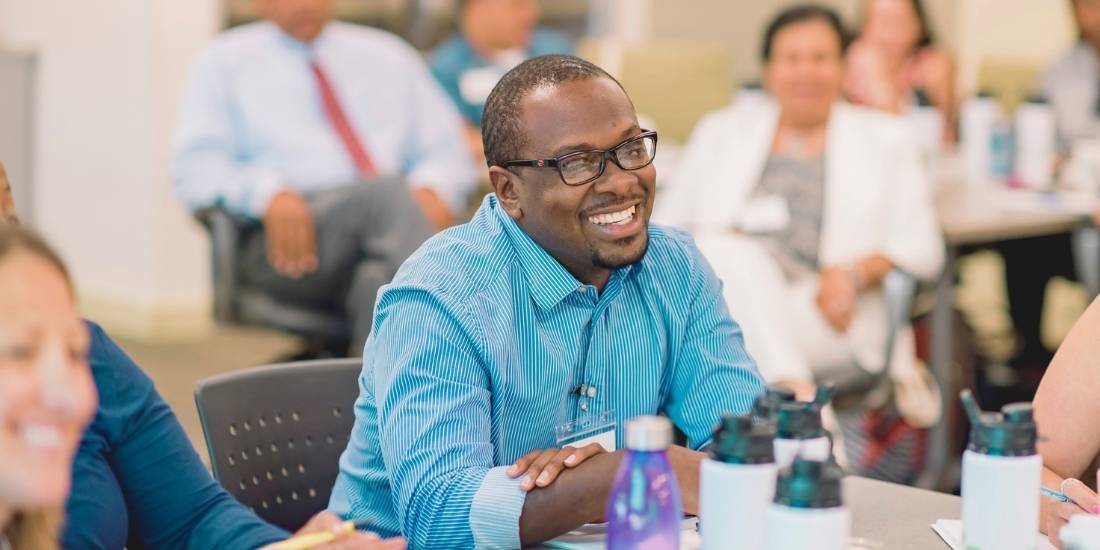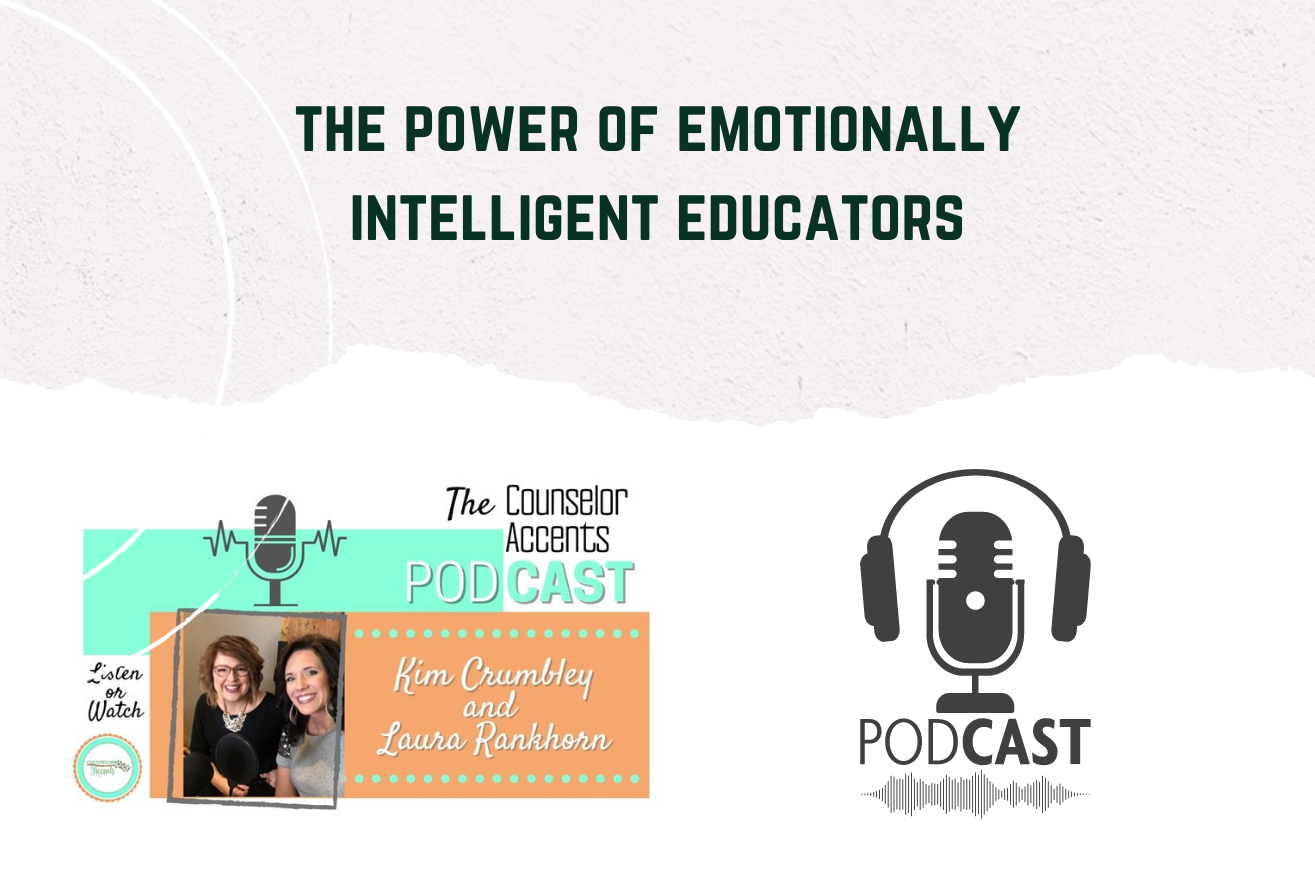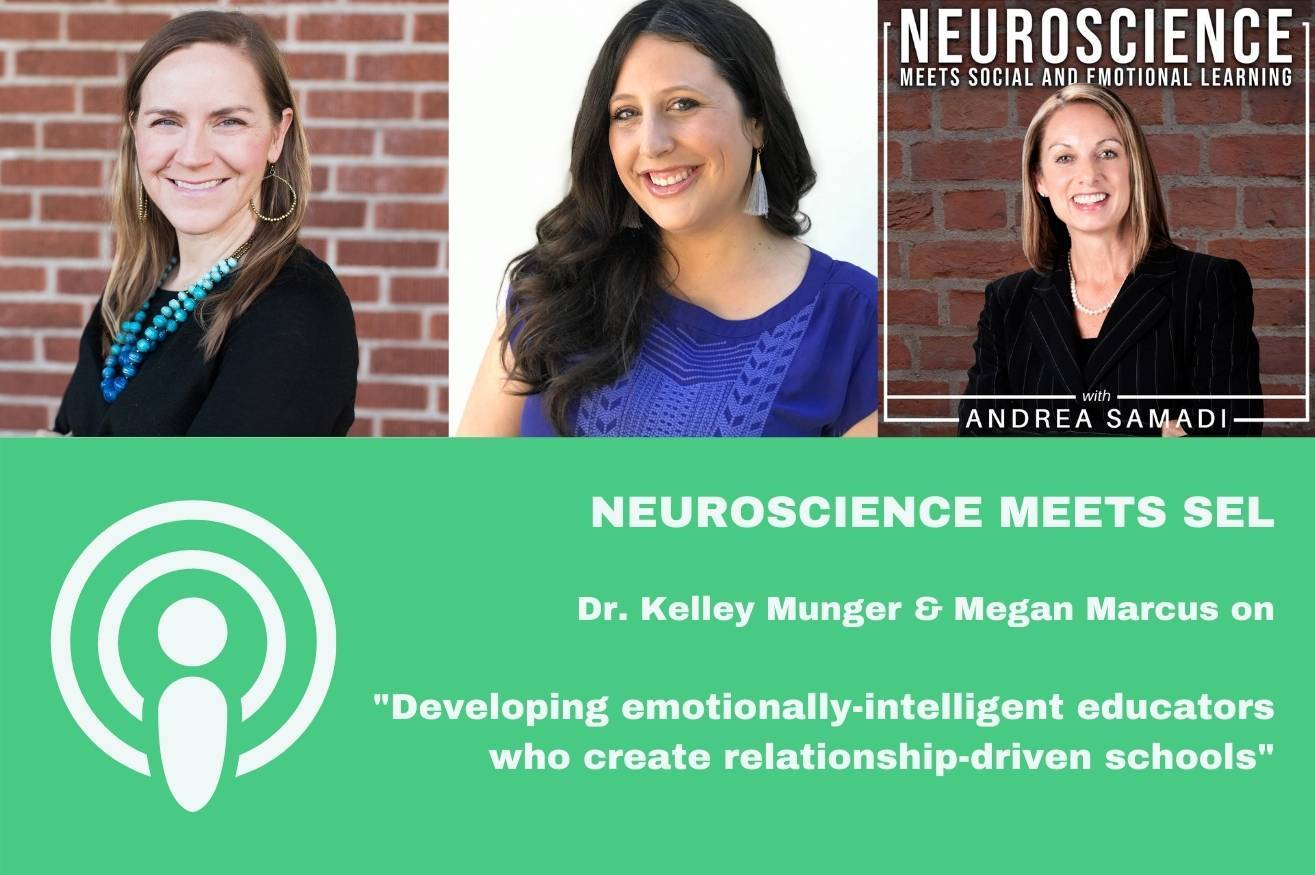4 essential principles for adult SEL trainings
Student social-emotional learning has gained traction over the last decade. But, given the stress placed on teachers due to COVID-19m, folks are finally starting to see the need for educators to grow their own social and emotional skills and wellbeing first.

We wrote this blog to share the essential, science-backed principles that guide all of FuelEd’s teacher SEL trainings. If you’re a district leader, school administrator, or a teacher charged with growing teacher SEL, improving teacher mental health or teacher burnout, or even addressing toxic school climate—read on! In this blog you will learn:
- Why relationship-building is a critical part of teacher professional development
- Why a sense of emotional safety during teacher trainings will drive outcomes
- How you can use brain science to build training exercises that maximize learning
- A key strategy that will supercharge educator wellbeing and professional learning
Let’s get started!
Essential Principles for Adult SEL Trainings
Most teacher professional development focuses on what more educators can do. FuelEd’s trainings are different in our focus on who educators are and how we care for them. FuelEd was founded based on the latest science of developmental psychology, social neuroscience, counseling, and neurobiology. We teach teachers about attachment and trauma, and the skills and self-awareness necessary to build secure relationships. Perhaps more importantly, all aspects of our trainings are designed in alignment with what decades of research tell us about how the human brain learns best.
Below we share with you the four essential principles that underpin all of our trainings:
Build supportive and trusting relationships
All learning happens through relationships, yet all too often in schools, we forget to see both the children and adults we work with as people first. When we remember that relationships drive learning, the content of what we teach becomes less important than who we are teaching and who is doing the teaching. In FuelEd’s trainings, we provide scaffolding and support for educators to engage in learning exercises that help them seek deeper knowledge of one another and share more of themselves to deepen learning and catalyze positive changes. Here are some ways you can integrate this principle into your school or district’s professional development:
- Integrate warm up exercises that allow teachers to get to know one another, personally
- Build opportunities for play and shared joy into professional development
- Communicate trust by allowing educators to use their own knowledge and experience to apply the learning
Some instructional leaders who facilitate teacher professional development think this is “warm and fuzzy” stuff. But really, the ROI will be more than you can ever imagine if you build in time for relationship-building into your teacher professional development. In the words of LaDon Ward, principal at ACE Campus Goodman Elementary:
At our school, we had to start with a clean slate of teachers at the beginning of the year. That meant that we had a staff full of virtual strangers. There were no connections, and so we were looking for a way to have our staff come together as quickly as possibly. I'm serious when I say I cannot have imagined how we would have been able to make this happen, the way we did ,as quickly as we did. During our FuelEd training, people made lifelong connections with people they'd never met before. There was so much sharing and we got connected unlike anything else. It was a game changer for our campus.
When we have more supportive and trusting relationships...we experience less anxiety...when we experience less anxiety, there is more learning. That brings us to our next essential principle.
Foster a sense of emotional safety
Working in schools is challenging, interpersonal work. In a single day, educators can feel joy, wonder, fear, frustration, confusion, and despair—all of which go mostly unacknowledged. The hierarchical and, at times, punitive nature of some school cultures can leave educators feeling paranoid, scrutinized, and judged — the opposite of safe. But here’s the thing: safety is the foundation of relationships and learning. When stress, fear, or anxiety is high, the brain shuts down. Optimal learning and neuroplasticity happens when the brain is in a state of low to moderate levels of arousal or stress: when we are stimulated enough so that we are not bored, yet safe and calm enough so that we can focus and perform. Here are some more ways we build emotional safety in trainings:
- We group teachers in units or “families” for the duration of the training and create norms around confidentiality
- Our trainers respond to every teacher "share" with mirroring. This helps teachers feel safe and seen.
- Training activities progressively dive deeper into self-exploration, as trust is established, allowing emotional safety to build incrementally.
In the words of one of our principals:
Culture drives the school So if you have a negative, unsafe, or toxic culture, it is is very unlikely that you're going to be successful. You're just kind of just spinning your wheels until you get the culture piece right. After the emotional safety we built in FuelEd’s training, every person at our school— including the custodians the cafeteria workers, the teachers, the students—everyone is made to feel important. Our school is now a place where people can envision themselves, they can make connections with other people and they they feel valued and appreciated. That's made all the difference for us.
Use both thinking and feeling
Whereas most teacher professional development focus on content knowledge and pedagogy (thinking stuff!), our training is built to encourage both critical thinking and emotional processing. This is for good reason: The left side of the brain is specialized for logic and rational thought while the right brain is specialized for strong emotions and physical experiences. When we activate both sides of the brain, it promotes brain integration, which is linked to emotional regulation, problem solving, greater emotional intelligence and even healing.
Here’s one example of how we do this:
We teach educators about the four attachment styles in students and adults. Then, we ask them to identify one student and one adult that they know that matches each style. This takes some critical analysis—first, processing the new information about the attachment styles, then, pulling from their personal experience to match a real life person with each attachment style. Once they’ve done this, we move them into identifying their own attachment style. Finally, we engage in a reflective exercise whereby educators share and process the emotions related to grappling with one’s own attachment style as well as the early childhood experiences that shaped it.
Supercharge learning and teacher wellbeing with story
Stories enhance our ability to learn by connecting us, shaping us, and stimulating our brains. Exploring and sharing our stories while listening to others’ stories supports emotional regulation, builds a clear sense of identity, strengthens self-esteem, and allows us to build healthier relationships with each other. Not only does sharing ones self and one’s story in this way create a more alive learning environment, it is actually a key ingredient to healing from trauma.
When designing professional development for teachers, think about how you can share your own story and also scaffold teacher's sharing their personal stories.
How we do this:
- At FuelEd, we have designed "storytelling circles," where small groups of educators share their “attachment stories.” Educators take turns recounting memories from early childhood relationships, exploring the hurt caused by parents/caregivers who didn’t meet their needs, and unpacking how these formative experiences influence their relationships today, in school and out. You can hear a pin drop as educators take the risk to share, and listen, with sincere intent and deep respect for one anothers’ stories.
- All of FuelEd’s Trainers are trained to model vulnerability and share their personal stories, which not only creates more emotional safety for the group and a more secure relationship with their Trainer, but also primes and prepares them for sharing their own story. This exercise is one of the most potent in our entire training.
People bared their souls and shared and cried and laughed and we did in a week's time what it probably would have taken years to do and so. Our teachers really let their walls: There was crying and like purging and connectivity. They understood, 'this is exactly what I needed.' I also learned things about the staff that I would have never been afforded the opportunity to learn without this training."
What’s next?
Use these essential principles to design your own professional development focused on teacher SEL — or even infuse them into your classroom learning environment!
If you’re wanting more support in growing your educators SEL, improving educator wellbeing, or strengthening school culture, FuelEd has a decade of experience facilitating learning environments designed to growth whole educators. Our team would love to chat with about our innovative training experiences. Click the link below to schedule time to connect!
Let's chat more about adult SEL training
SCHEDULE A CALL


